Last updated: July 5, 2017
Article
Channel Islands Serve As Reptile Evolution Laboratory
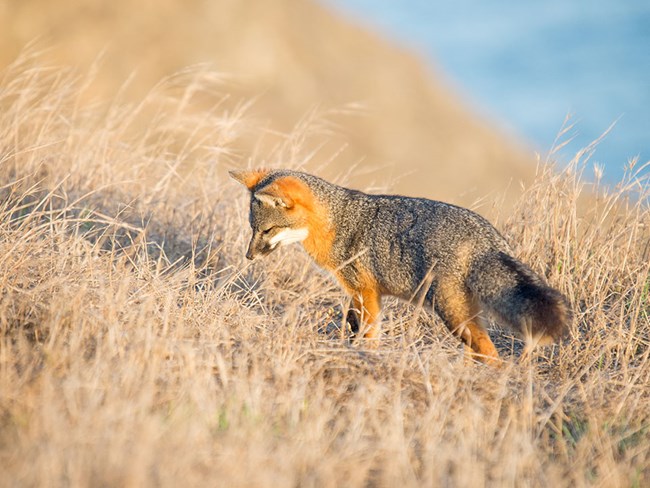
NPS / Jessica Weinberg McClosky
June 2017 - What do pygmy mammoths, island foxes, and Santa Cruz Island gopher snakes have in common? Sure, they’re all vertebrates found at one time or another in Channel Islands National Park, but there’s something else. All are dwarf species with larger mainland counterparts (Columbian mammoths, gray foxes, and Pacific gopher snakes).
It is not unusual to find dwarf species on islands. Biologists have long noted high frequencies of dwarfism, and also gigantism, on islands around the world. Fewer predators is one possible explanation for gigantism, while dwarfism is thought to evolve as a result of more competition or less food availability. An example of a living giant in Channel Islands National Park is the island scrub jay, 1/3 larger than mainland scrub jays.
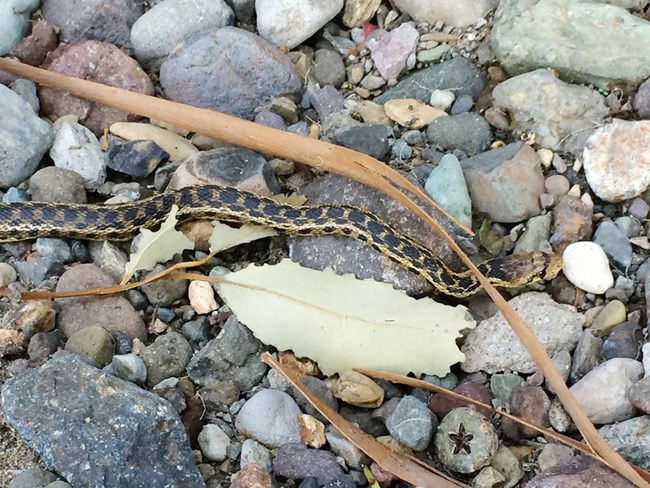
© thomashulsey, some rights reserved (CC BY-NC)
Still, there are more questions than answers surrounding the evolution of dwarfism and gigantism. Two scientists have recently been examining body size evolution in Channel Islands species. Dr. Greg Pauly at the Natural History Museum of Los Angeles County was studying many decades worth of Museum specimens when he discovered that the Santa Cruz Island gopher snake is not the Channel Islands’ only reptilian dwarf! Southern alligator lizards and western yellow-bellied racers on the islands are also significantly smaller than their mainland brethren.
Dr. Amanda Sparkman was just beginning to study dwarfism by comparing the mainland and island gopher snakes when she made a similar discovery, confirming Dr. Pauly’s findings for both species. With help from her students at Westmont College, and her collaborator Dr. Tonia Schwartz from Auburn University in Alabama, Dr. Sparkman is now studying all three species along with their full-sized counterparts.
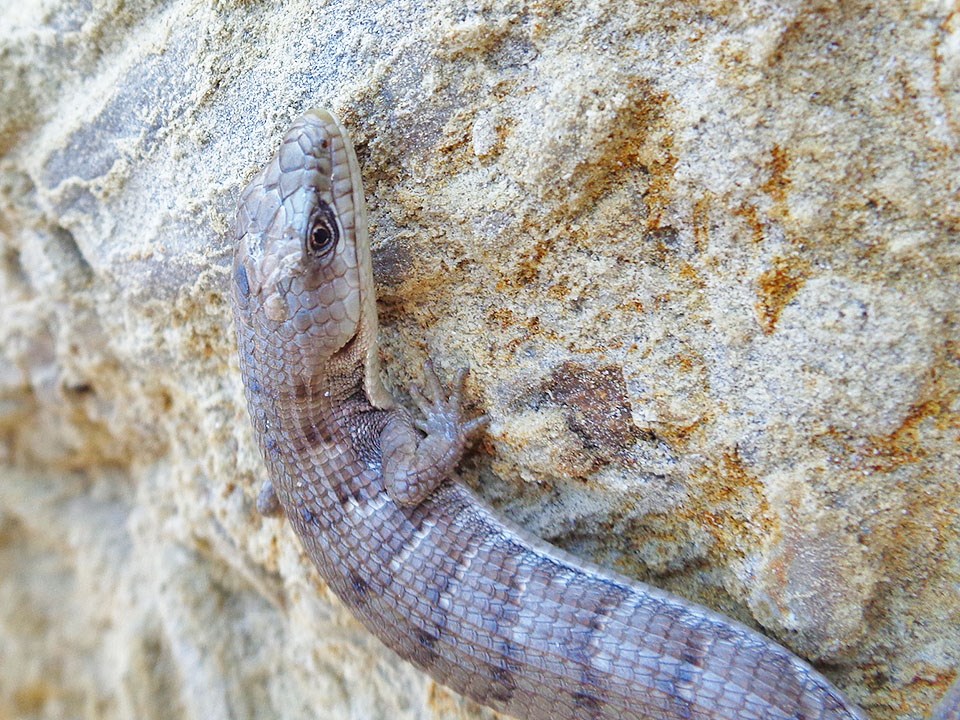
© Angel Galvan, some rights reserved (CC BY-NC)
In particular, her research will attempt to answer three main questions about the evolution of dwarf reptiles on the Channel Islands:
- Did they all evolve smaller body sizes by way of changes in the same genes and physiological mechanisms, or different ones?
- Have they evolved similar life history traits? For instance, have their growth rates, offspring size, and number of offspring changed in similar ways?
- Have they evolved similar behavioral traits such as more or less aggression?
Many of those questions will take many years of research to answer. Still, Dr. Sparkman has a few interesting preliminary, unpublished results from the first couple years of data collection:
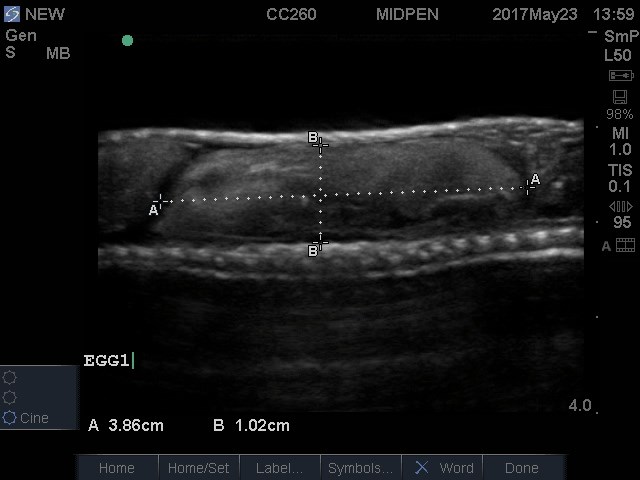
© Amanda Sparkman
- Besides being smaller overall, western yellow-bellied racers on the islands also have smaller heads relative to the rest of their body. Why is still a mystery, though one hypothesis is that they may eat smaller prey.
- The island dwarfs seem more likely to have lower blood sugar than their mainland relatives, which could be related to lower prey availability.
- Anti-predator and exploratory behavior as measured by tongue-flicking and movement seems to have changed in opposite directions for yellow-bellied racers and alligator lizards. The yellow-bellied racers move around less, and females flick their tongue less compared to mainland racers. Meanwhile, the alligator lizards seem to flick their tongues and move around more than their mainland cousins. This seems to indicate that sharing the same island environment does not necessarily lead to similar evolutionary pressures on behavior for different species or different sexes.
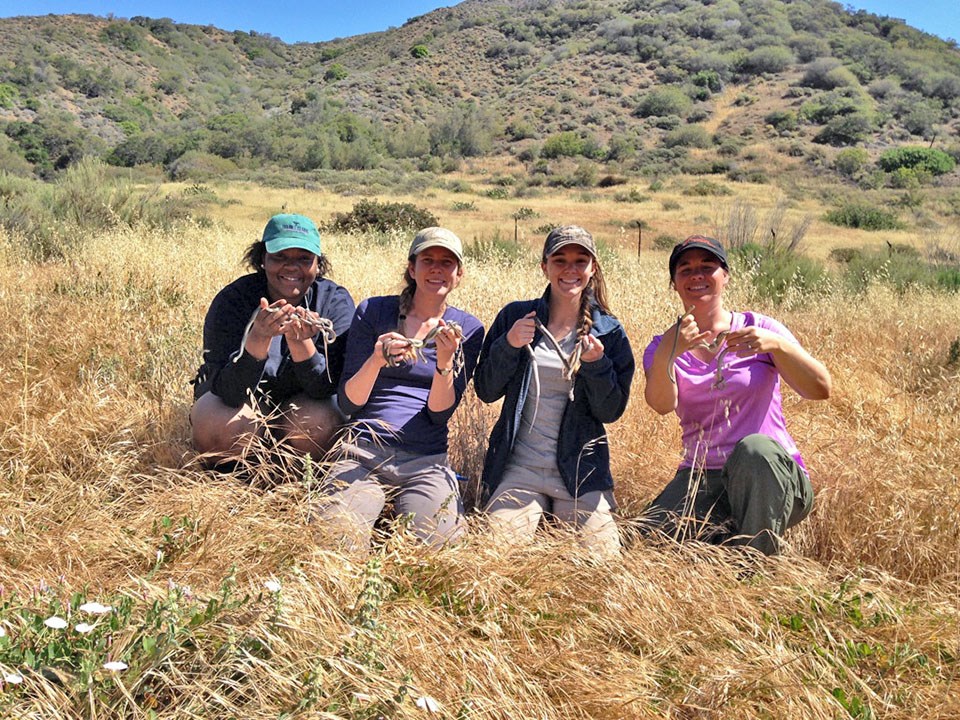
© Nicole Kabey
Prepared by the Mediterranean Coast Inventory and Monitoring Network.
